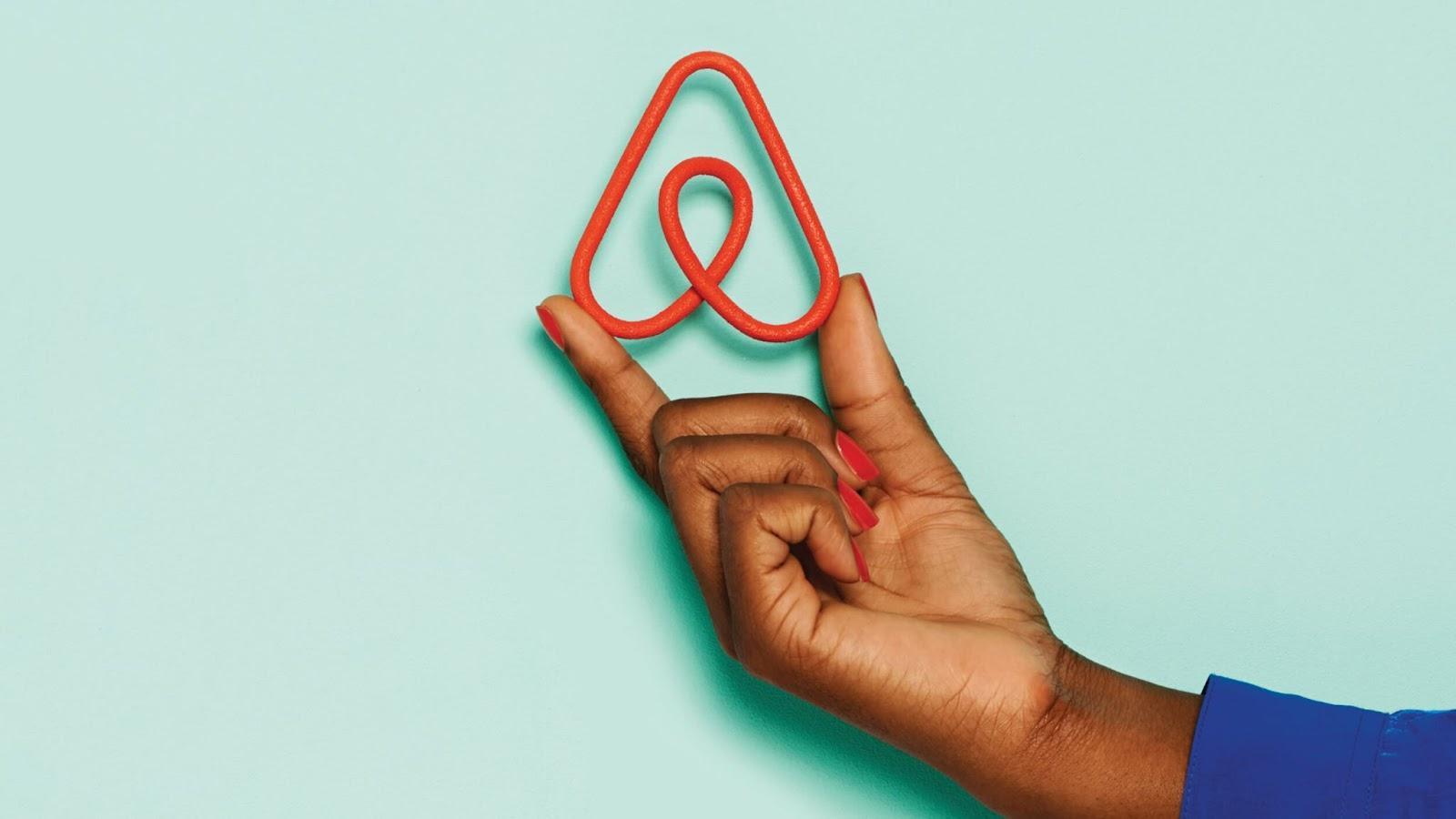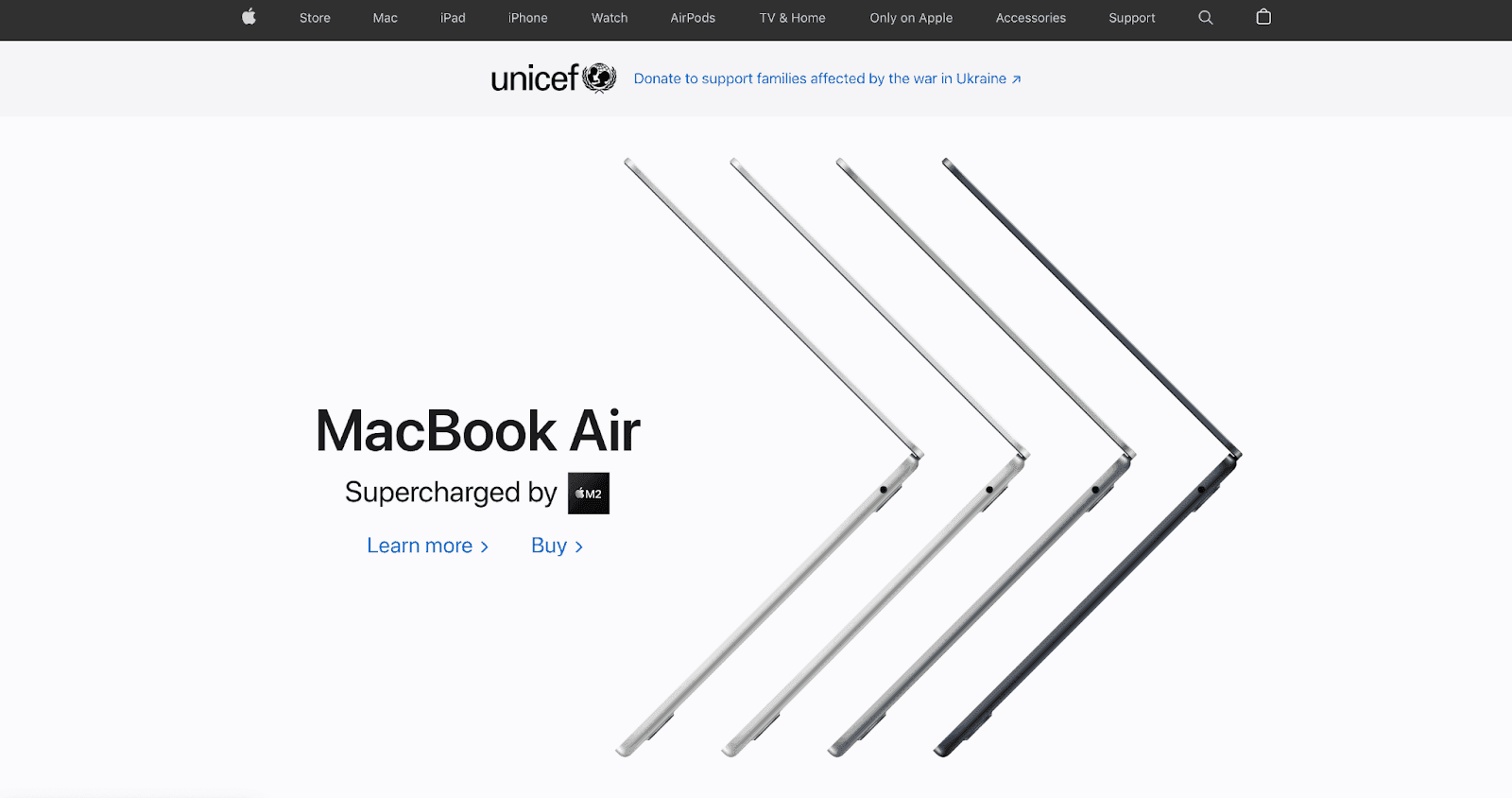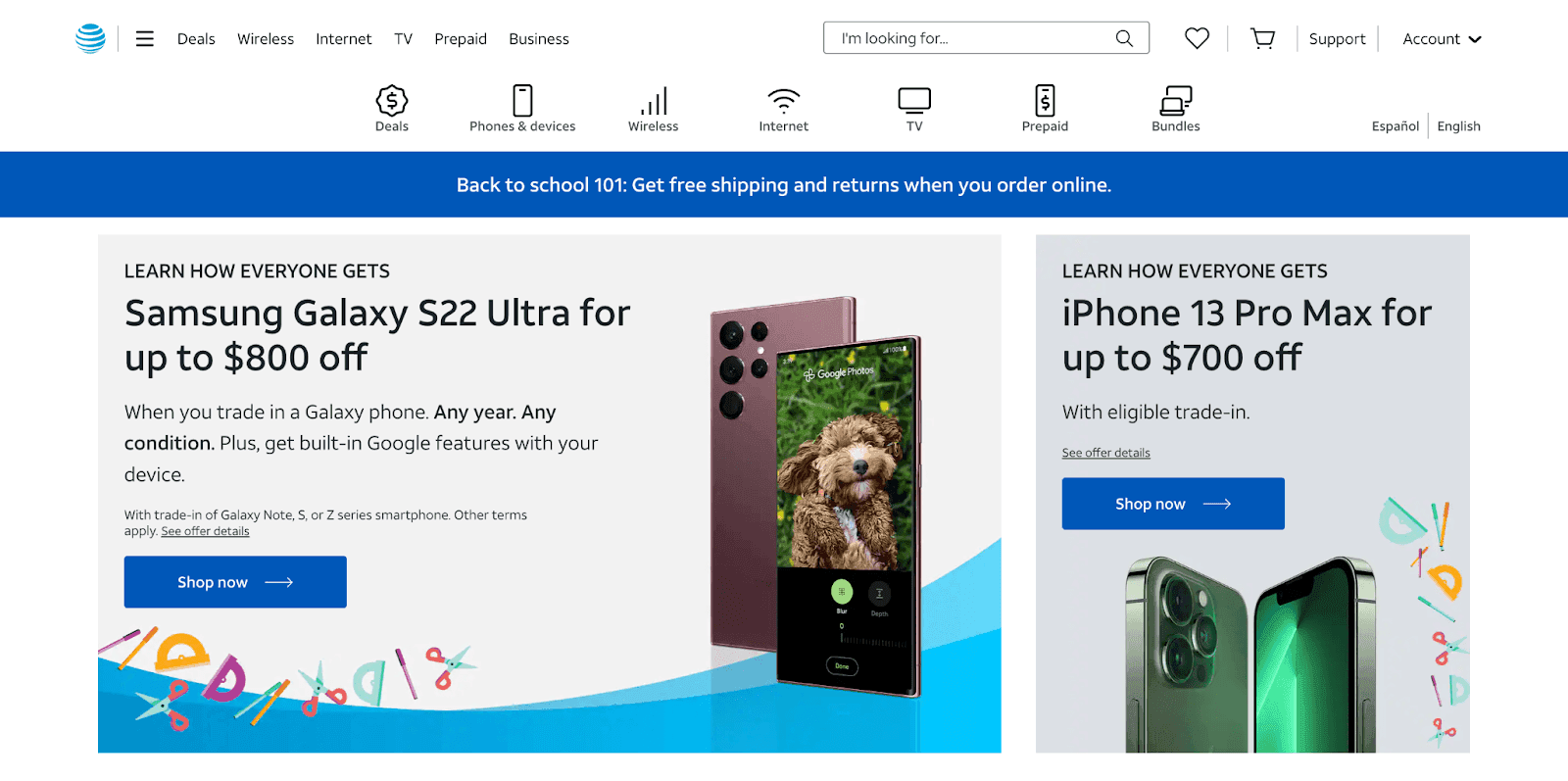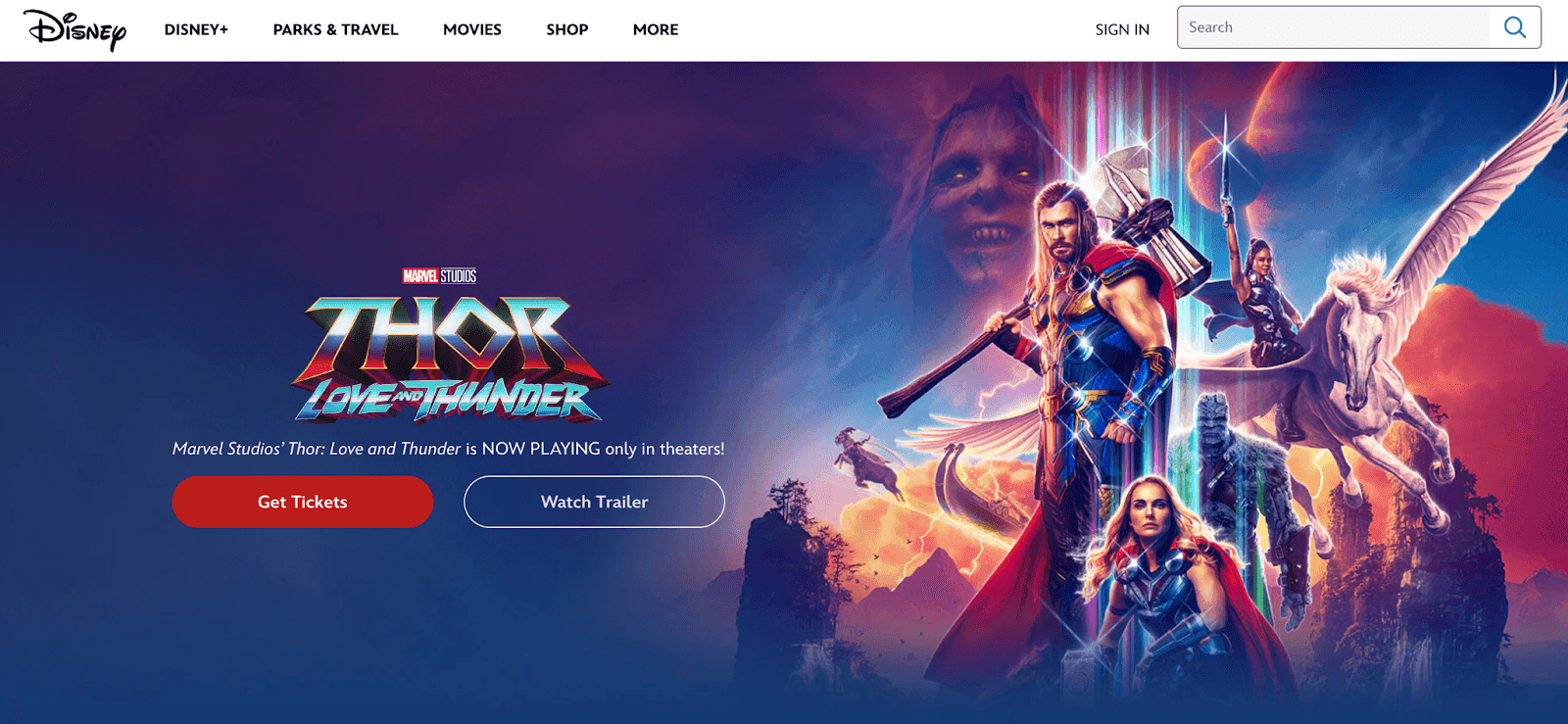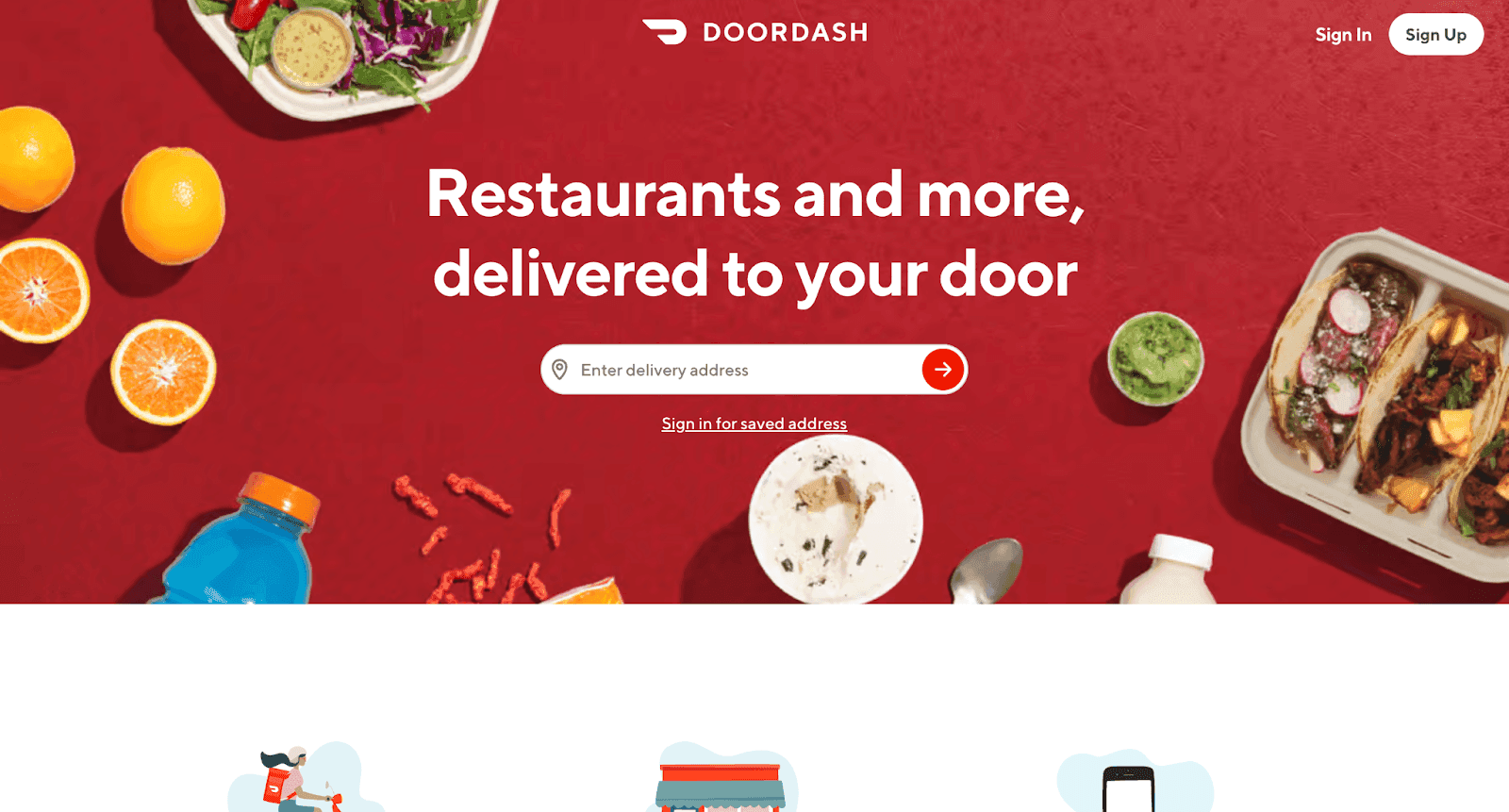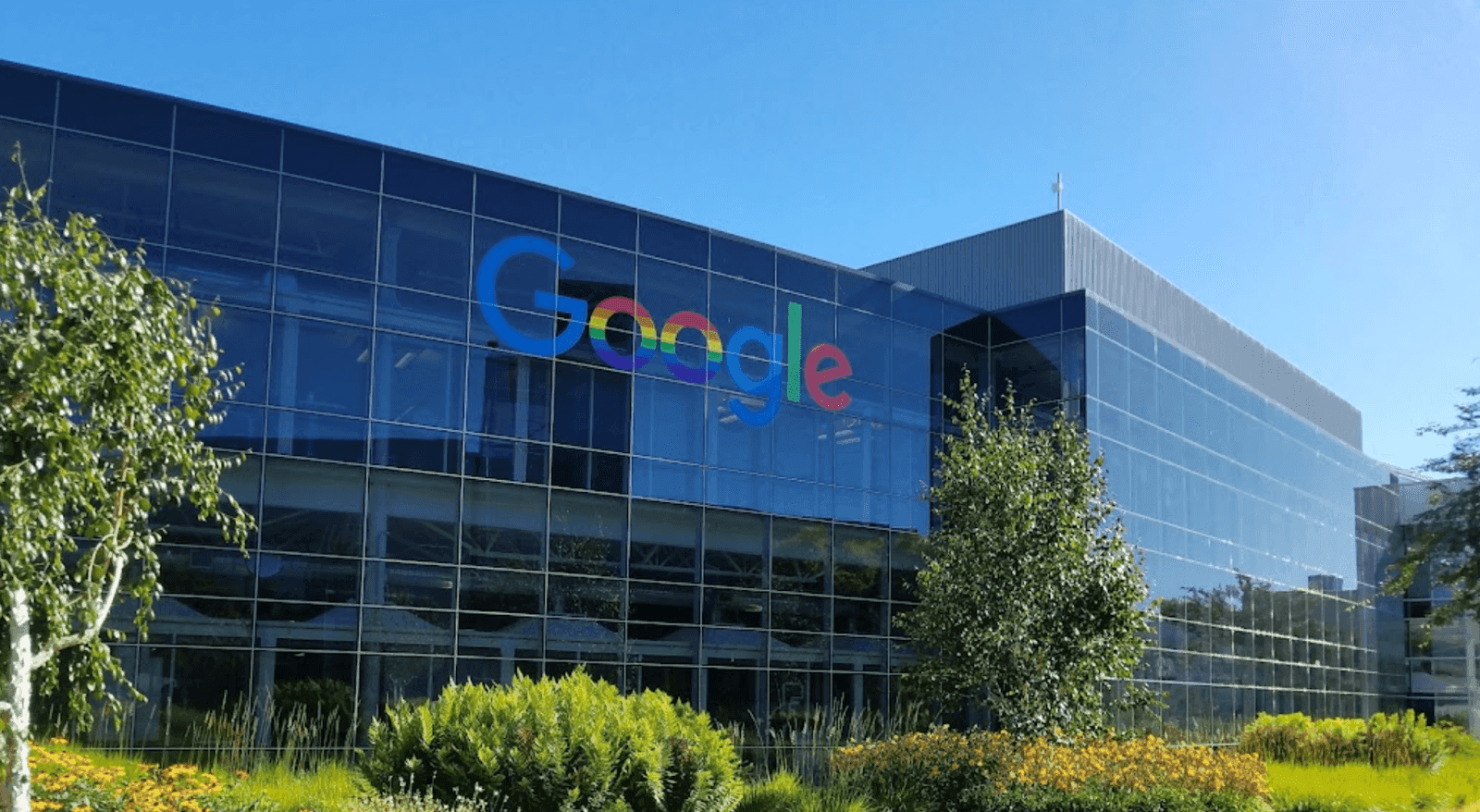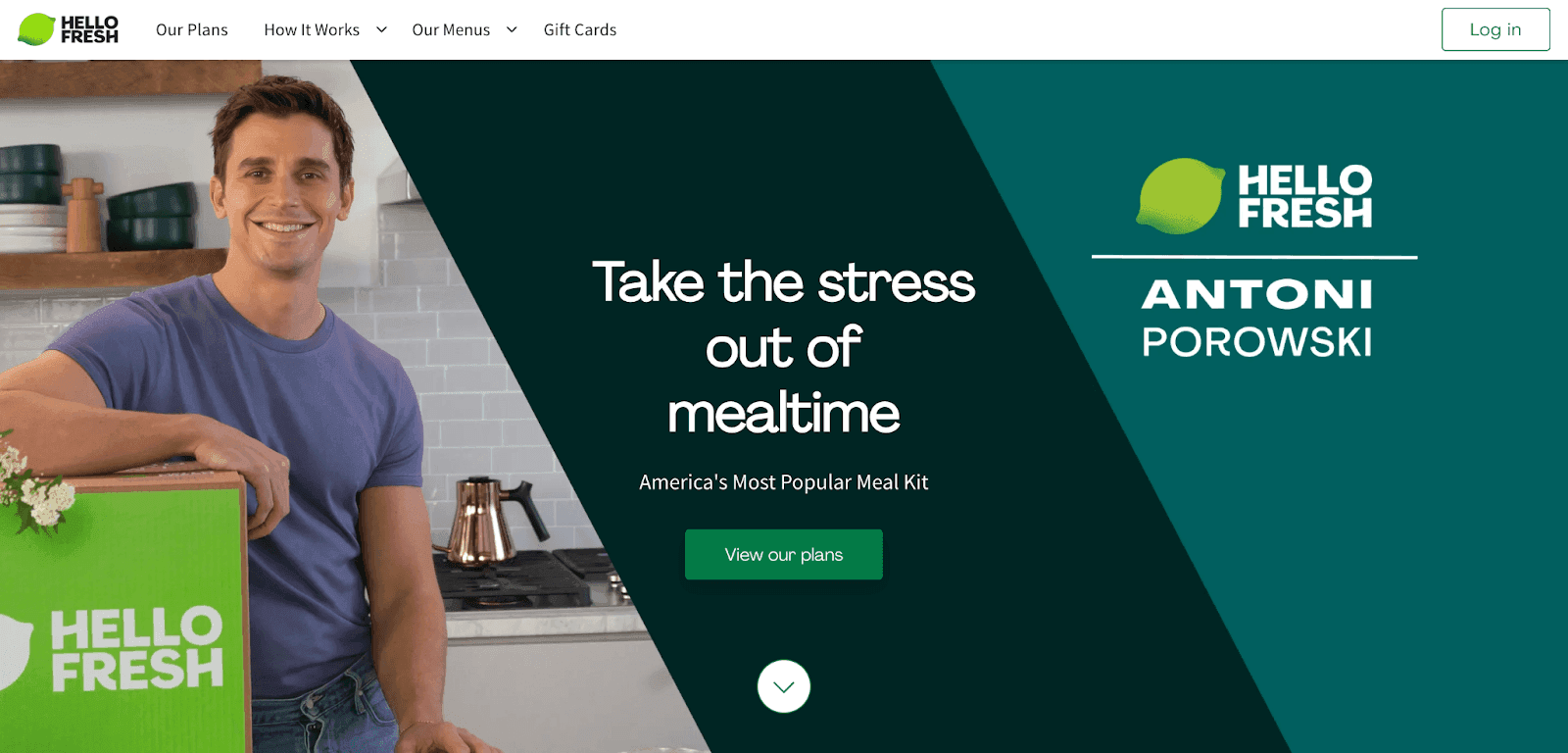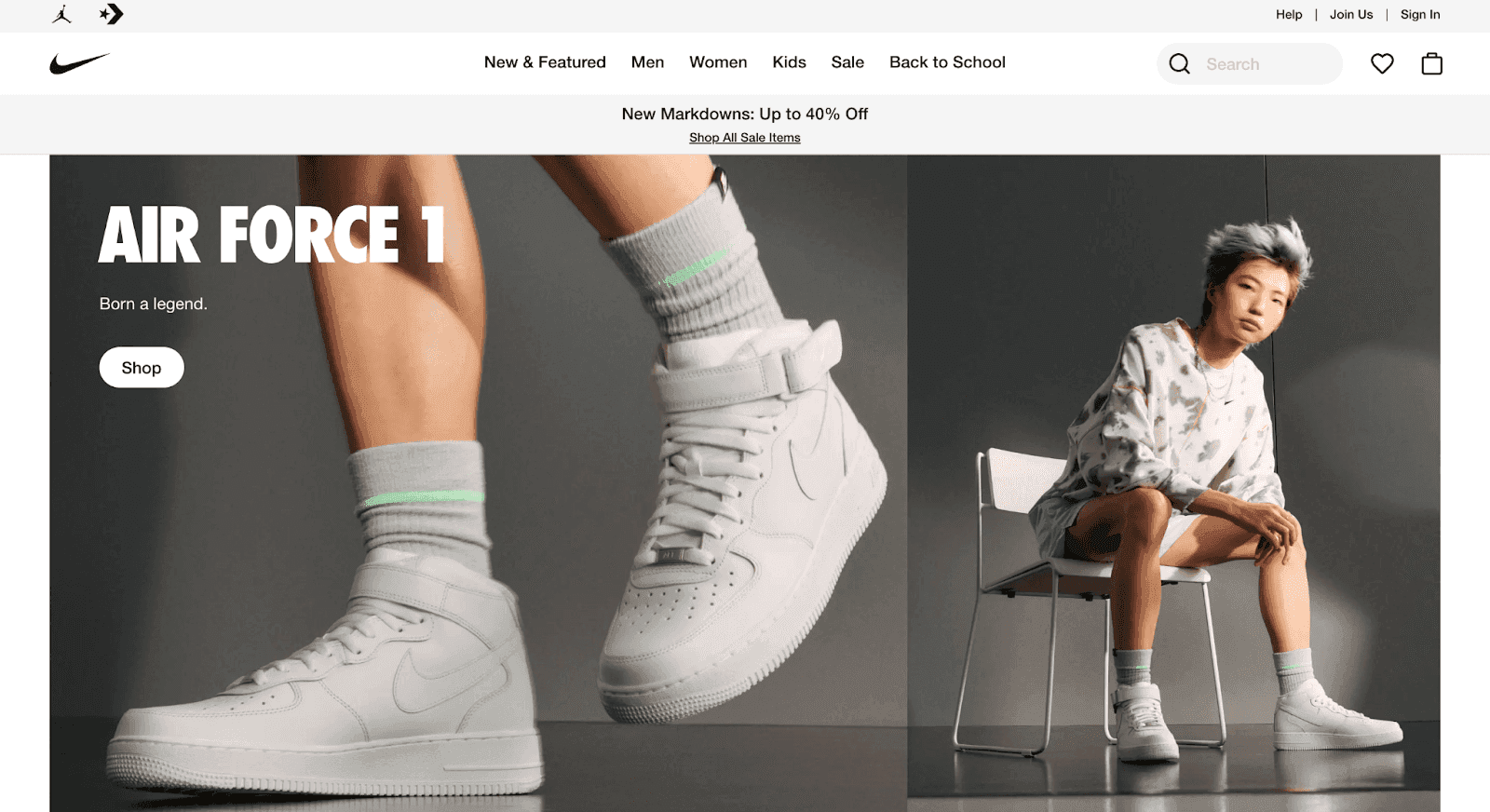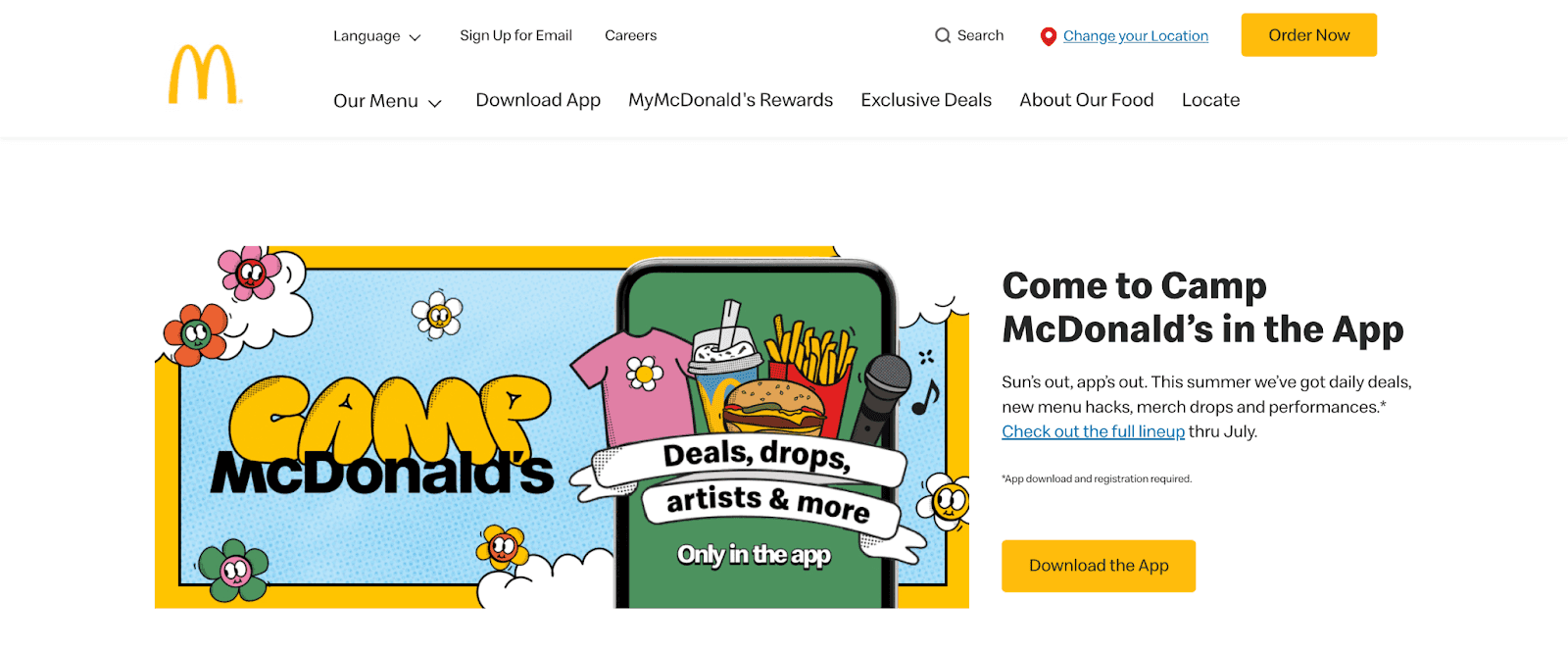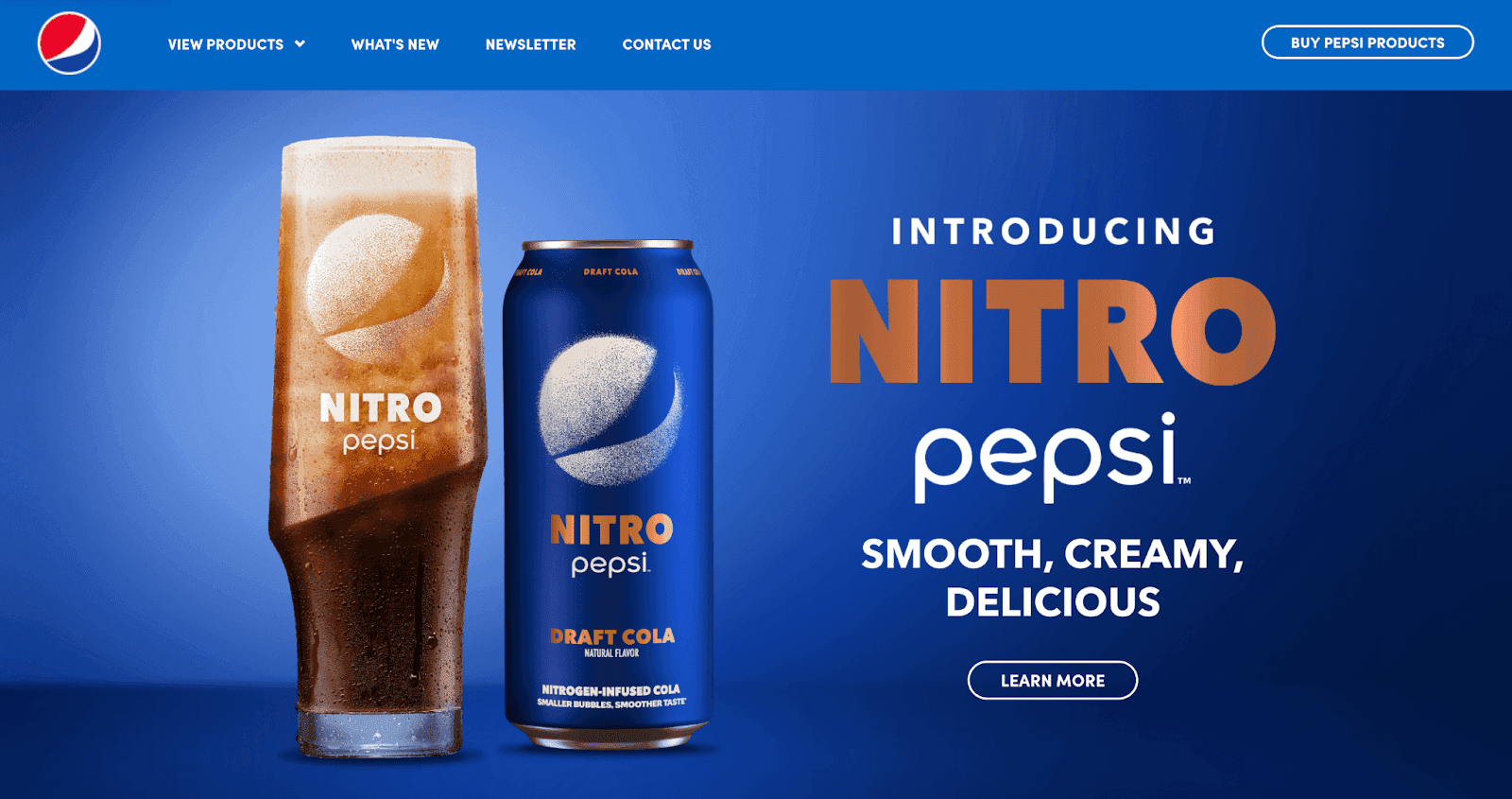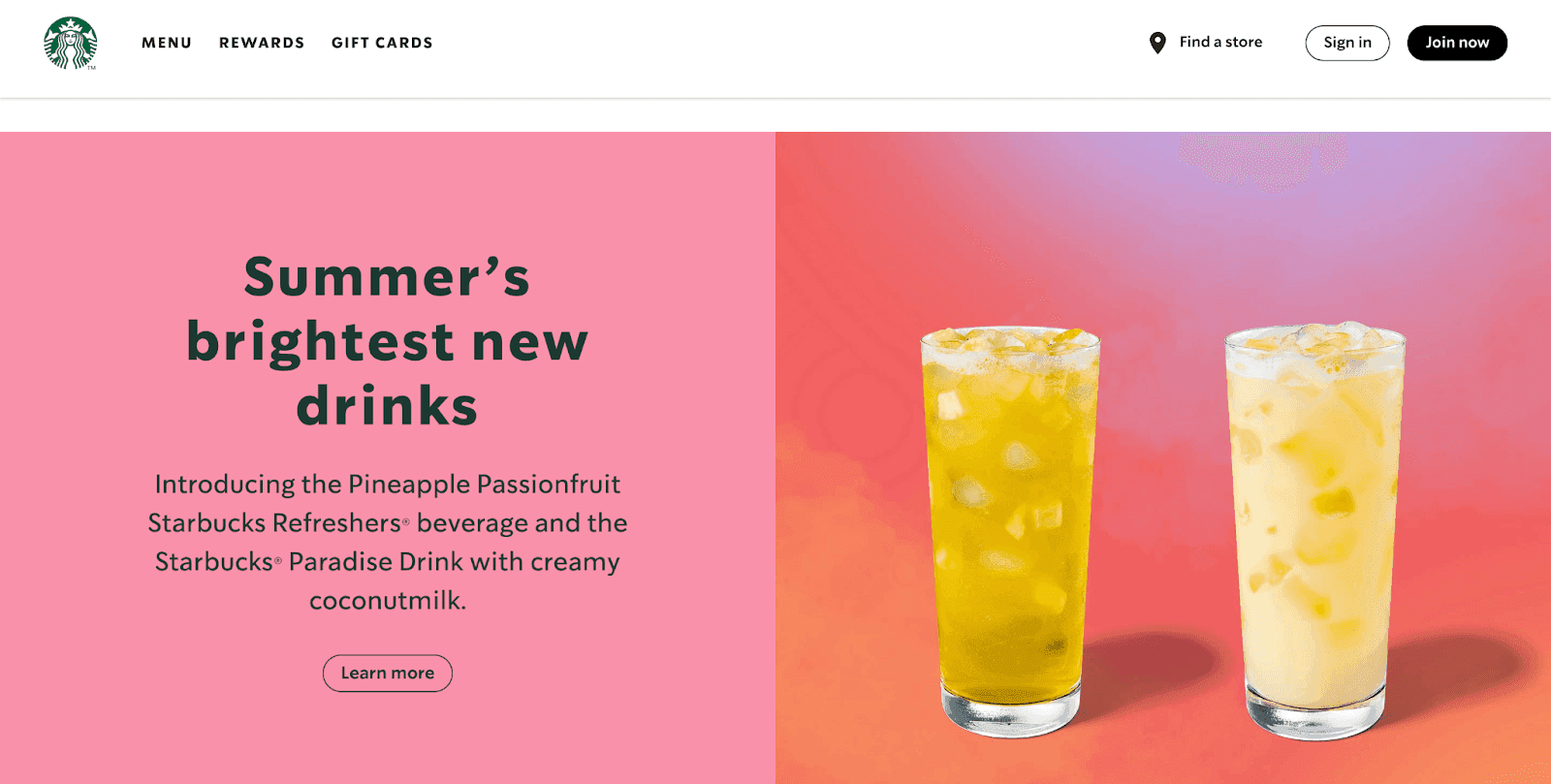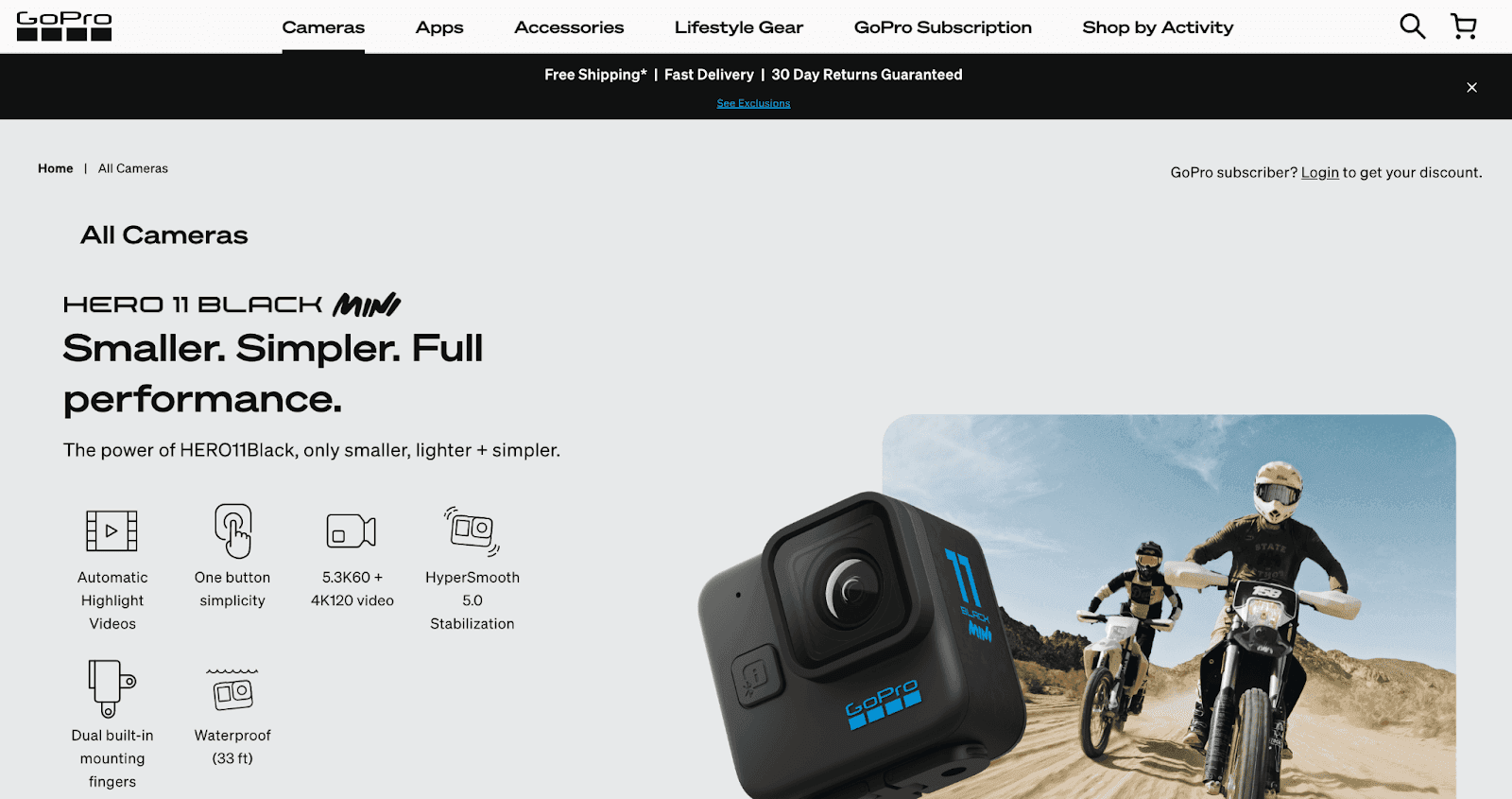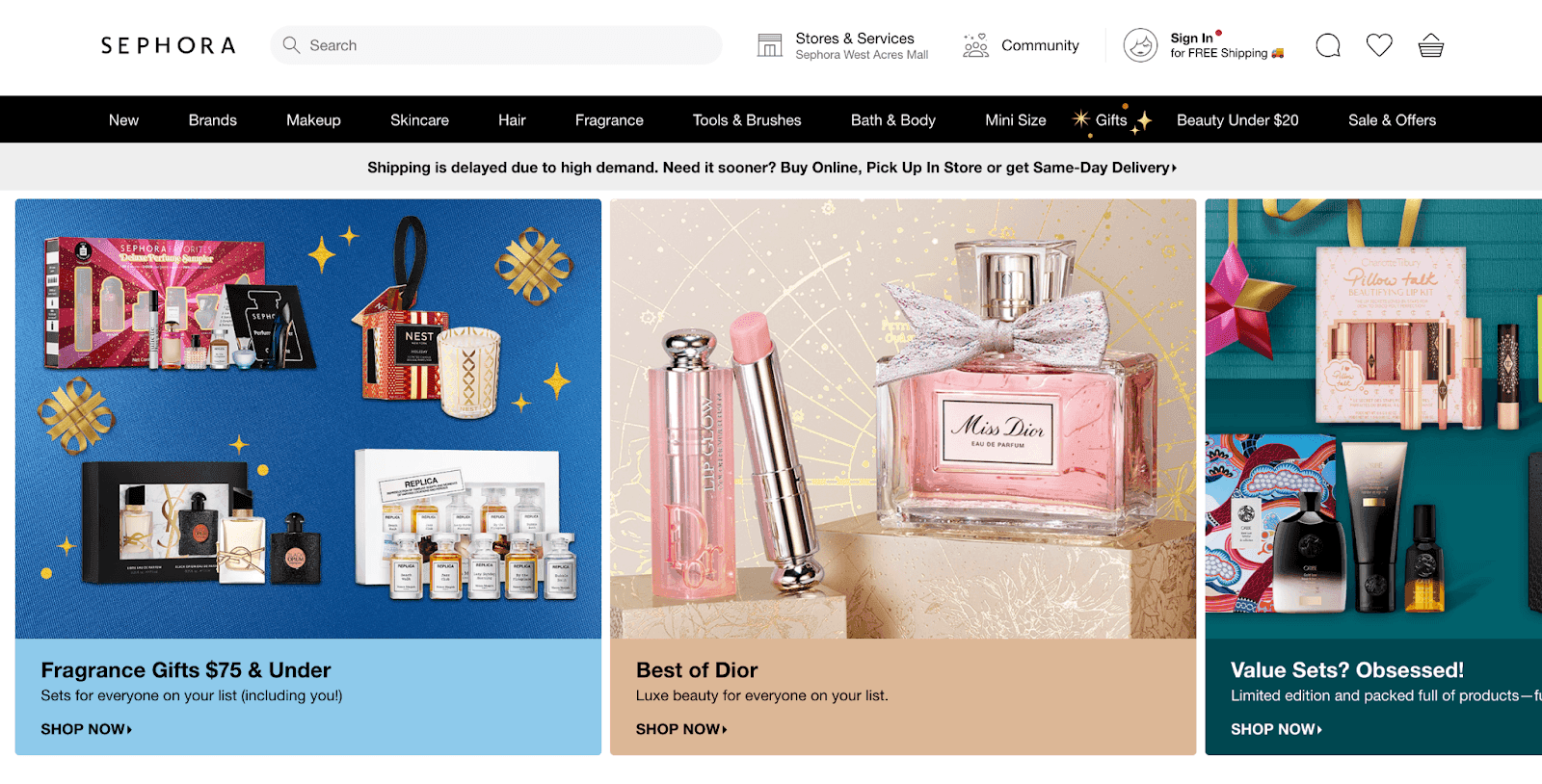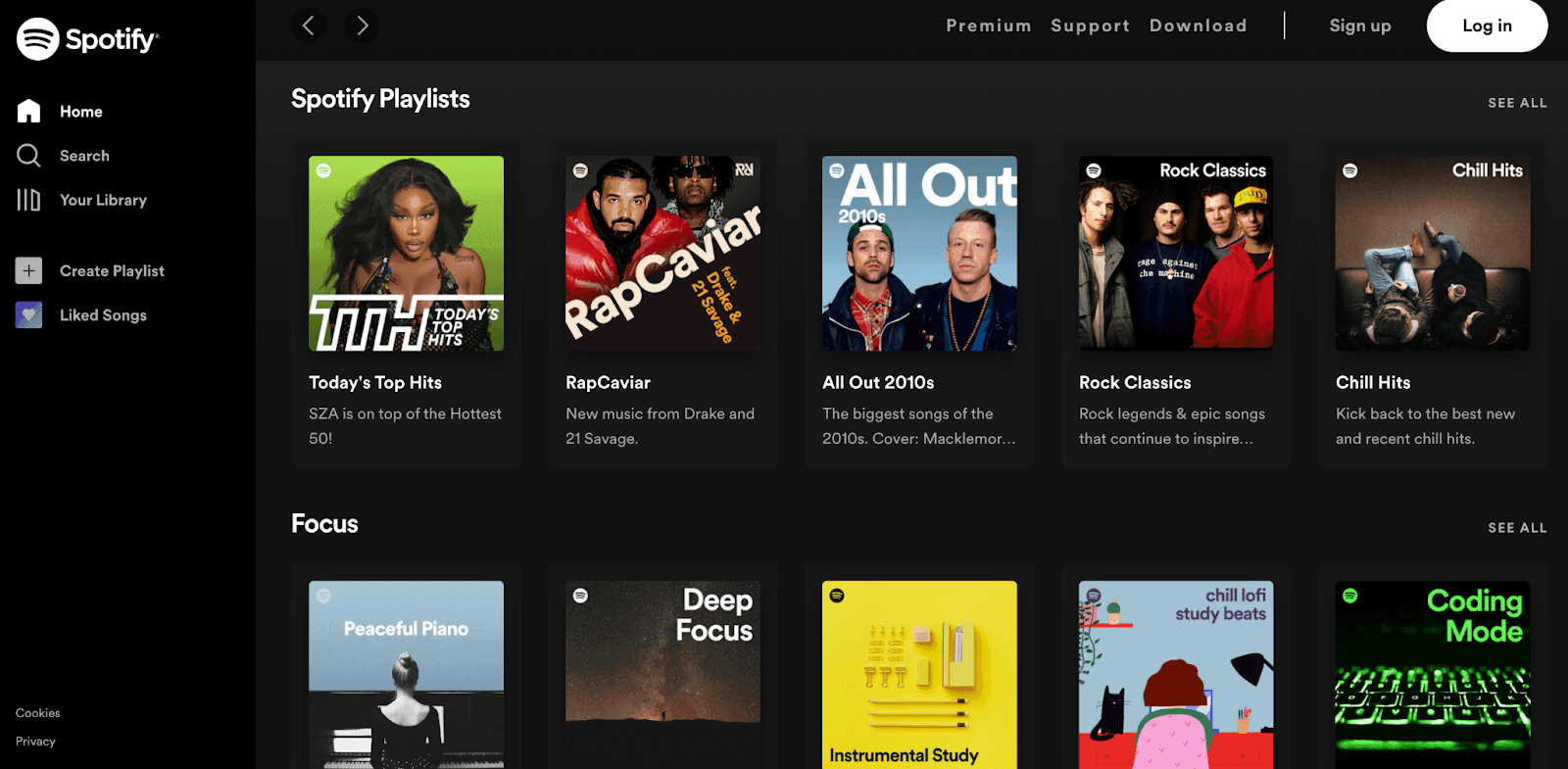Understanding marketing mix without examples is similar to learning what ingredients you need to bake a chocolate lava cake but not knowing exactly how to make it.
Think of it as learning based on theory — not practice.
It’s why we put together this piece to walk you through marketing mix examples that show you the theory in action.
But first, a quick recap:
Marketing Mix
Marketing mix is the set of categories on which a marketing strategy focuses: product, price, place, promotion, packaging, positioning, and people.
With that, let’s look at the 7 Ps of the marketing mix, followed by a dive into examples of how brands practice the theory.
The 7 Ps of marketing are a framework to help you create a winning marketing plan that resonates with your target buyers.

Here are example attributes to consider with each of the 7 Ps of the marketing mix:
1. Product
The product or service sits at the center of all marketing. And critically analyzing it is a key to marketing success.
To determine what problems your product solves, ask yourself questions such as these:
- Who is the target market?
- Why is it the best fit for my audience?
- What would they call your product category?
- Who would they say your competitors are?
- What quality of product are they seeking?
- How large is your target market?
- What benefits does your product provide the target market?
The answers to these questions inform your messaging and allow you to focus on your product’s benefits and consumer pain points instead of product features.
Recommended: Product Description Generator
2. Price
Economical, luxury, and high-end are some words that come under product pricing.
Regardless of your approach, you must understand what your target buyer is willing to pay instead of pricing your product on guesswork.
To help you determine your pricing, ask yourself:
-
- What is the perceived value of your product?
- How may your pricing reflect this value?
3. Place
Place determines product distribution. That is: where will your product be available for purchase? Will it be an online store? Or do you use physical storefronts?
Place determines how you’ll distribute your products to reach end-users/consumers.
So ask yourself:
- Where will your product be available for purchase?
- Do you own these distribution channels?
- Do you work with partners to distribute your products?
- Will you use physical storefronts?
- Will there be an online presence?
Different distribution channels you can use for your products include wholesale, outlet stores, single-location retailers, chain/department stores, franchises, or ecommerce stores.
4. Promotion
Promotion focuses on the how and where of getting your product in front of your audience.
Some questions to consider
- What marketing tactics will you use to promote your product?
- What marketing channels will you use?
- What marketing content will you publish?
These questions will help you think up different marketing ideas and decide the channels you’ll use to reach your audience and a plan to get the word out and continue attracting customers.
5. Packaging
Good product packaging positively affects consumer buying behaviors. Not just that, but it improves customer experience, encouraging them to buy from you again.
To improve your current product packaging, ask yourself these questions:
- What is your product’s first impression on the target market?
- What does the target market see, hear, touch, smell, or taste when they experience your product for the first time?
- How does your target market feel when they experience your product for the first time?
6. Positioning
Define your unique selling proposition (USP) — the impression you want to leave on your customers.
Think about the following questions:
- How does this product differ from others in its product category?
- Why is it the best option?
- Why should your target market hire this solution?
- What outcomes will your target market gain by hiring this solution? What impression do you want to leave on your customers?
These questions help you determine how your product or service differs from other businesses offering similar products/services. And how your customers should perceive you.
7. People
And finally, determine who your target audience is. Then create your marketing persona to inform all your marketing efforts moving forward.
To get started, ask yourself:
- Who is your target audience?
- Who are your best kinds of customers?
- What traits/qualities/attributes do these customers share?
- What causes these good customers to search for a solution?
- Why do they hire your solution instead of competitors?
All Ps in the marketing mix are complementary- each P informs another P. Together, they help create a cohesive marketing strategy.
For instance, brands such as David Yurman jewelry offer luxury Products that aren’t sold for a bargain Price or in a common Place such as Walmart.
Conversely, David Yurman’s target market (People) may not expect to find bargain Price jewelry at retailers such as Neiman Marcus (Place), where they would purchase luxury brands.
In short, all Ps in the marketing mix example above are interdependent. In turn, this helps the brand run audience-resonating marketing campaigns.
Now for the practical side of things with marketing mix examples worth learning from:
1. David Yurman Marketing Mix Example
- Product: High-end fashion jewelry that speaks volumes of quality and status.
- Price: Expensive – targeting folks with the buying power to wear (and gift) luxury jewelry. Their pricing strategy? Fewer sales but at high prices.
- Place: Available online, at its storefronts, and a handful of authorized, high-end fashion retailers’ storefronts. This helps further reinforce the luxury positioning as the product is not up for grabs at stores selling economically priced goods.
- Promotion: Highly targeted, showcasing a luxurious lifestyle with influencer actress Scarlet Johansson.
- Packaging: Iconic packaging elevates the lavish experience. It adds to the luxury impression and makes the target market feel posher.
- Positioning: The jewelry fits extravagant folks who want to show off their taste in premium jewelry.
- People: David Yurman targets people who want to demonstrate their wealth and achievement. This can include both women and men wearing and buying luxury gifts for their partners to make them feel special.
2. Coca-Cola Marketing Mix Example
Now let’s walk you through another marketing mix example that’s completely different from David Yurman: Coca-Cola.
The carbonated soda brand sold only nine drinks daily in its first year of inception in 1886. Today, the company sells 1.9 billion drinks daily. Their marketing mix? Let’s break it down below:
- Product: Everyday, common soda beverage that consumers can have on its own and with their daily meals or as part of celebrations and get-togethers.
- Price: Reasonable, something their target consumer can easily afford to have daily. Their pricing strategy is conditional on high volume sales at lower prices.
- Place: Readily available. From physical storefronts to vending machines, convenience stores, and grocers — even online. The idea behind this is: Easy access encourages sales.
- Promotion: Since Coca-Cola targets one and all, they use every other marketing channel to promote their soda. The plan? To reach as many consumers as possible. It’s why you’ll see billboards featuring Coca-Cola, television ads, social ads, and more.
- Packaging: Coca-Cola’s iconic bottle shape with its fluted lines was initially designed to stand out from the competition. The idea was to create a unique bottle shape that could become immediately associated with Coca-Cola. Additionally, with their personalization tactics, such as having consumers’ names on the bottle, the beverage company ups the consumer experience they offer, growing word of mouth and user-generated content (UGC) as part of their marketing strategy.
- Positioning: Coca-Cola positions itself with joy. All of its marketing promotes feelings of togetherness. As a result, consumers see Coca-Cola as more than just a fizzy drink. Instead, they see it as a symbol of happiness and celebration with friends and family.
- People: Nearly everyone is their target buyer, including those who prefer sugar-free drinks.
3. Red Bull Marketing Mix Example
Since entering the market in 1987, Red Bull has remained the most popular energy drink brand worldwide. Over the years, Red Bull has sold over 100 billion cans and, as of 2020, held 43% of the global energy drinks market share.
Here’s what a breakdown of their marketing mix looks like:
- Product: Aside from the original drink, Red Bull now sells a variety of energy drinks with different tastes. For instance, there’s Red Bull Sugarfree (without sugar) and Red Bull Total Zero (without calories), just to name a few. Red Bull’s product line is a major contributor to their marketing strategy.
- Price: Red Bull’s drink quality and dominant market share allow them to use a premium pricing strategy.
- Place: Like Coca-Cola, Red Bull is also readily available. Customers in over 171 countries can buy Red Bull in supermarkets, clubs, and bars. In many cases, Red Bull is available in locations where the demographic need to party or stay up late.
- Promotion: The “Red Bull gives you wings” tagline is one of the most popular brand taglines worldwide. This tagline’s use in TV and online ads helps promote Red Bull. In addition, the company sponsors sports teams, events, and other high-risk/energy activities. The goal? To make their young customer base think of Red Bull whenever they want to engage in any high-energy activity.
- Packaging: Red Bull comes in a silver-blue with excellent grip and portability. The image of the two fighting bulls right in the middle of the can also represent strength and durability. Even among competitors, Red Bull’s package design has since become the standard design for energy drink cans.
- Positioning: Red Bull is the go-to drink for anyone who wants to boost their energy levels or engage in high-intensity activity.
- People: It’s for nearly everyone who wants to keep their energy levels up.
4. Airbnb Marketing Mix Example
Airbnb started as a simple idea in 2008 to help travelers find lodging and experience life in a new city without dealing with hotels. Today the brand has grown to a company valued at $113 billion.
Here’s a simple breakdown of the marketing mix that helped them get there:
- Product: Airbnb’s platform connects homeowners with travelers looking for short-term accommodation. These accommodations or “listings” could be a private room (your own room in a home + some shared common space), a shared (a sleeping space and common areas shared with others), or an entire place (a place all to yourself).
- Price: Airbnb allows homeowners to set the price to list their spaces on the website. Most listings use a value-based pricing model, where costs depend on factors like local popularity, seasonality, lead time, etc.
- Place: Over 4 million hosts from 100,000+ cities have listings on Airbnb. Anyone can book Airbnb listings as long as they can connect to the internet.
- Promotion: Airbnb creates social media and TV ads targeted at hosts and travelers looking for accommodation.
- Packaging: In 2013, Airbnb rebranded its narrative from “A place to stay” to “Belong Anywhere.” Along with the rebrand came a new logo — the ‘Belo’ symbol — representing people, place, love, and the “a” in Airbnb.
- Positioning: Airbnb positions itself as a cheaper alternative to hotels while offering visitors more unique experiences. Their positioning strategy is a key aspect to their marketing efforts.
- People: Airbnb serves millions of hosts who rent their spaces/homes and millions of guests who book these spaces.
5. Amazon Marketing Mix Example
Amazon is one of the world’s largest and most valuable brands. The brand has come a long way from its humble beginnings as an online bookstore to where people can buy almost any product — and have it on their doorsteps the next day.
Let’s examine Amazon’s marketing mix:
- Product: Amazon is the one-stop ecommerce store for almost every type of product (electronics, baby stuff, fashion items, house equipment, health products, and so on).
- Price: Items on Amazon are reasonably priced, so the average person can afford to shop there. Many of their products are also 20-25% cheaper than other stores because Amazon buys directly from manufacturers.
- Place: Amazon operates as an online store. And they ship to over 100 countries.
- Promotion: Amazon uses a mix of traditional marketing channels (TV and print ads) and digital marketing channels like social media and PPC ads. Amazon also sponsors various events and makes considerable donations to charities.
- Packaging: Products bought from Amazon come in the brand’s characteristic box with arrow markings by the side.
- Positioning: Amazon is positioned as a low-cost and convenient solution to people’s shopping needs.
- People: Anyone who needs to buy something from an online store is Amazon’s target buyer.
6. Apple Marketing Mix Example
Apple leads the way as the world’s most valuable brand with a whopping $3 trillion in market capitalization. In the first quarter of 2022, Apple generated over $97 billion in revenue.
What does their marketing mix look like? Let’s find out:
- Product: Apple offers a wide variety of products that all work within the same ecosystem. Foremost among these products are iPhones, Macbooks, Apple Watches, and iPads.
- Price: Apple uses a premium pricing model that accounts for its products’ tech, innovation, build, and social currency.
- Place: Customers can purchase Apple products from Apple stores (physical and online), regional carriers, and authorized Apple resellers.
- Promotion: Over the years, Apple has done well to create excellent campaigns that differentiate them from its competitors. The most famous examples are the “Think Different” campaign and the “1000 songs in your pocket” ad for the iPod. Today, the brand continues to use print and social media ads to promote its products and differentiate itself from competitors. In addition, there are also yearly events Apple uses to generate buzz around new product launches.
- Packaging: Apple maintains a simple and clean design that heightens the sensory experience for customers — whether they’re unboxing new products or using existing ones. Most of Apple’s products have a minimalist and metallic look, making them visually appealing.
- Positioning: Apple’s products are positioned around three core tenets: simplicity, creativity, and humanity. This position is evident in how Apple develops innovations that help their users (especially creatives) improve their work.
- People: The primary market for Apple’s products are middle/upper-income individuals who don’t mind paying a premium for a better user experience.
7. AT&T Marketing Mix Example
AT&T is the largest telecommunication company globally, with over $168 billion in revenue in Q3 2022 alone.
Here’s a breakdown of their marketing mix:
- Product: AT&T has various telecommunication products and services. These include broadband internet services, phone plans, digital security, and other streaming services.
- Price: AT&T uses a pricing strategy that allows customers to customize the plans depending on their needs. For instance, they offer deals and bundles (that combine internet and TV packages) with convenient payment plans.
- Place: Although its main presence is in the United States, AT&T also has voice coverage in over 220 countries and data coverage in 190 countries.
- Promotion: Since AT&T has been around since 1885, the brand enjoys word-of-mouth marketing. In addition, AT&T also uses TV, social media, and print ads to promote its products and services.
- Packaging: As a telecommunications company, AT&T doesn’t have physical packaging. However, they do maintain consistent branding across all their online properties.
- Positioning: AT&T aims to maintain a position as the leader in wireless phone and data coverage.
- People: AT&T targets people who want to stay connected with their family and friends. Since their pricing is flexible and dependent on a person’s needs, anyone can become their customer.
8. Disney Marketing Mix Example
Disney, one of the animation industry’s leaders, boasts various characters like Mickey Mouse, Snow White, Cinderella, etc., that have made the company dear to the hearts of millions worldwide.
Let’s have a look at their marketing mix:
- Product: Disney makes full-length movies, animations, and TV shows. They also have radio programs, offer studio entertainment, and sell comic books, merchandise, and video games. Another central product/business line Disney has are its theme parks (touted as the “happiest place on earth”), resort hotels, and cruise lines.
- Price: Disney uses a value-based system to price its various products and services. Although value-based, Disney’s products and services are generally affordable.
- Place: Disney uses different mediums to distribute their products and services because of their vast product catalog. Examples include movie theaters, online stores, physical Disney stores, mobile apps, and theme parks.
- Promotion: Disney adapts its promotion to each product or service. For instance, trailers are used for movies and TV shows. Disney’s other promotion channels include sponsorships, social media, partnerships, TV, print ads, billboards, etc.
- Packaging: All of Disney’s physical products carry either Disney’s branding or that of its subsidiaries like Marvel, Pixar, Star Wars, National Geographic, and so on.
- Positioning: Disney’s brand position is to create joy, happiness, and unforgettable experiences shared with friends and family.
- People: Disney’s primary target audience is families — especially those with kids.
9. DoorDash Marketing Mix Example
DoorDash’s growth since its launch in 2002 has been remarkable. The company has grown from a small team of four to having over 6000 employees while holding a $10 billion+ valuation.
Here’s what DoorDash’s marketing mix looks like:
- Product: DoorDash is a simple food delivery service that allows users to receive orders from local restaurants without having to leave their homes, office, or anywhere else they might be. In 2021, DoorDash launched a new service known as Double Dash. With this new service, customers can make multiple orders (with no extra charge) on the same delivery run.
- Price: DoorDash’s prices are reasonable for their service level to restaurants and customers.
- Place: DoorDash operates in all 50 states in the US and some European countries. All DoorDash orders are made either from the mobile app or website.
- Promotion: Advertisement on TVs, social, and print helps DoorDash spread the word about its services. DoorDash also partners with restaurants and fast-food chains to gain more customers.
- Packaging: DoorDash deliveries usually arrive in sealed bags or boxes.
- Positioning: DoorDash positions itself as the bridge between helping people find great food conveniently and helping restaurants find more customers.
- People: Nearly everyone and restaurants are their target buyers.
10. Google Marketing Mix Example
Google, a subsidiary of Alphabet Inc, is a tech company most commonly known for its search engine, which bears the same name. As of 2022, Google is the second most valuable brand in the world, behind Apple.
Here’s a breakdown of Google’s marketing mix:
- Product: Google has a suite of products and services focusing on search engine technology, artificial intelligence, consumer products, computer software, and so on. These products include Google (the search engine), Pixel mobile devices, Gmail, etc.
- Price: Since Google offers many different products and services, the brand’s pricing also has different layers. Many of the services come with a freemium pricing model. Google’s physical products are typically priced based on demand and the market. Their online advertising services use a value-based pricing system.
- Place: For the most part, Google runs its business on the internet. However, for physical products, consumers can visit Google’s physical retail stores — available only in England for now.
- Promotion: Google promotes its products and services by running ads on social media, in print, on TV, and on other digital and traditional channels. Google also sponsors events and partners with other businesses to give its products more reach.
- Packaging: For almost all its physical products, Google currently uses a sustainable, recyclable, and plastic-free package. This aligns with the brand’s commitment to reducing its carbon footprint.
- Positioning: Google’s position is to help as many people as possible to find the pieces of information they need to learn more about the world around them.
- People: Anyone with an internet connection.
11. HelloFresh Marketing Mix Example
HelloFresh is a German-based meal-kit company that delivers fresh ingredients customers can use to make a meal.
Let’s have a look at HelloFresh’s marketing mix:
- Product: HelloFresh delivers high-quality ingredients, recipe cards, and meal kits that make cooking less of a chore.
- Price: HelloFresh’s pricing is reasonable and similar to its competitors.
- Place: All HelloFresh’s business is done online in the United States and Europe.
- Promotion: HelloFresh uses mostly digital channels like influencer marketing and social media ads to promote its products and services. They’ve also used traditional means like product placement on TV shows and billboards.
- Packaging: HelloFresh uses sustainable meal-kit bags with cool pouches, ice packs, and soft plastics, depending on a customer’s order.
- Positioning: HelloFresh positions itself as a convenient, healthier, and time-saving alternative to grocery stores or supermarkets.
- People: Individuals between the ages of 23-50 are HelloFresh’s core target audience.
12. Nike Marketing Mix Example
You simply cannot list the most successful companies worldwide without mentioning Nike.
The swoosh logo, the “Just Do It” tagline, and the tons of professional athletes who wear Nike products do enough to keep them on everybody’s minds.
What does Nike’s marketing mix look like? Let’s find out:
- Product: Nike designs, manufactures, and sells athletic shoes, apparel, accessories, and other sporting equipment.
- Price: Nike uses a value-based and premium pricing system for its products.
- Place: Customers can shop for Nike’s products at Nike’s online store, in Nike’s retail outlets, and in third-party retail stores.
- Promotion: Nike spends millions of dollars yearly to promote its products through TV and social media ads. Most of these ads usually carry a “do it against all odds” message, which fuels their customers’ desire to achieve more success. Nike also sponsors many sports teams and works with influential professional athletes.
- Packaging: Nike’s shoes and other products come in nature-friendly materials that all wear the swoosh logo.
- Positioning: Nike has positioned its brand as the top choice for professional athletes who want to achieve at the highest level possible.
- People: Nike primarily targets athletes or people who are active or engage in physical fitness activities. They also have many products for people who want to wear their latest shoes.
13. McDonald’s Marketing Mix Example
No other fast-food company in the world makes more revenue than McDonald’s. So what’s the marketing mix that helped them get there? Let’s find out:
- Product: McDonald’s is a fast-food chain that sells items like hamburgers, chicken sandwiches, salads, french fries, etc.
- Price: Food items from McDonald’s are reasonably priced as the brand aims to keep costs as low as possible.
- Place: Customers mostly walk into McDonald’s restaurants near them. These physical locations are all around the United States and across Europe, Asia, South America, Australia, and some parts of Africa. Customers can also order their meals online and have them delivered through DoorDash, Postmates, or similar delivery services.
- Promotion: McDonald’s uses creative ads on TV, newspaper, billboards, and social media to stay at the top of people’s minds. They also target children with their “Happy Meal” promotion. In addition, McDonald’s sponsors sporting events and partners with celebrities.
- Packaging: McDonald’s current packaging carries a playful look and feel that reflects the joy of eating at McDonald’s. Most of the packaging material also comes from recycled sources.
- Positioning: McDonald’s positions itself as people’s happy place and a location where families come to spend time with their loved ones.
- People: Nearly everyone, especially children, parents with young children, and teenagers.
14. Pepsi Marketing Mix Example
Although Coca-Cola has been the more popular soft drink, Pepsi has had its fair share of success since its founding in 1893.
Here’s the 7 Ps breakdown for Pepsi:
- Product: Mostly carbonated soda beverages with different flavors like Diet Pepsi, Pepsi Mango, Diet Pepsi Wild Cherry, and more.
- Price: The prices are reasonably set based on customer demand and competitors’ pricing.
- Place: Pepsi is available in over 200 countries at vending machines, supermarkets, cinemas, fast-food chains, etc.
- Promotion: Pepsi’s brand image and awareness are boosted by ads on almost all traditional and digital marketing channels, along with celebrity endorsements.
- Packaging: The Pepsi globe design is one of the most recognizable logos worldwide. Most of Pepsi’s products come in a characteristic vibrant blue color but in cans and bottles that look similar to their competitors.
- Positioning: Pepsi positions itself as a young, modern, and vibrant brand. The brand’s rich music heritage is at the forefront of this positioning.
- People: Pepsi’s target audience is anyone in the market for a soda. However, Pepsi tries to differentiate itself from Coca-Cola by targeting the young and energetic market segment.
15. Starbucks Marketing Mix Example
When you mention coffee, it’s almost certain that Starbucks is the brand that comes to people’s minds.
Let’s examine Starbucks’ marketing mix to see how they’ve achieved success:
- Product: Starbucks is widely known for its wide variety of coffee drinks, teas, espressos, etc. The brand also sells snacks and merchandise like mugs and tumblers.
- Price: Customers pay a premium price to purchase Starbucks coffee.
- Place: Starbucks has stores in over 79 countries. The brand aims to make its store a connection center where people can feel they belong.
- Promotion: Starbucks combines different marketing channels (like TV, social media, and influencer marketing) to promote its products.
- Packaging: Coffee and other products from Starbucks carry the unmissable siren logo and descriptions that help customers differentiate what they’ve bought from each other.
- Positioning: Starbucks positions itself as its customer’s “third home” where they can feel a connection with themselves and society.
- People: Middle to upper-class individuals.
16. GoPro Marketing Mix Example
GoPro is one of the world’s leading manufacturers of wearable action cameras and accessories. The brand has become a multi-million dollar company with an $800 million business valuation.
Let’s explore GoPro’s marketing mix:
- Product: GoPro mainly sells portable action cameras but ventures into additional accessories and apps that benefit the camera’s use.
- Price: Cameras and accessories from GoPro are priced using the value-based price strategy.
- Place: GoPro’s products can be purchased online or via an electronic carrier store.
- Promotion: With 20 million followers on Instagram alone, GoPro advertises with social media channels and user-generated content to promote its products.
- Packaging: Cameras and accessories are encased in high-quality and sustainable packaging.
- Positioning: GoPro positions itself as a competitive brand with its evolving camera and sporty nature.
- People: The majority of GoPro’s customers are active millennials.
17. Sephora Marketing Mix Example
With over $10 billion in revenue yearly, Sephora is a multinational retailer of personal care and beauty products.
Take a look at the makeup of Sephora’s marketing mix:
- Product: Sephora endorses more than 340 brands that offer a variety of beauty products, from hair care to fragrance products.
- Price: With a demand-oriented pricing strategy, Sephora provides competitive prices based on the popularity and quality of the product.
- Place: The brand sells its products online, in stand-alone stores, and within other stores.
- Promotion: Sephora uses the omnichannel marketing strategy to promote its products on social media, in person, and through various advertisements.
- Packaging: Sephora packages their products into boxes or bags with the notorious black and white striped design.
- Positioning: Sephora positions themselves as a luxurious brand that bridges the gap between drugstore and high-end products.
- People: The company targets high-income women, but Sephora is expanding product lines for any gender identity and income status.
18. Spotify Marketing Mix Example
Spotify is an international music and media streaming platform that has grown to over 433 million monthly users.
Let’s tune into Spotify’s marketing mix:
- Product: Spotify sells digital music, podcasts, documentaries, and videos with over 80 million tracks and 4.7 million podcasts.
- Price: The company offers a free subscription with the option to upgrade to monthly subscriptions that are reasonably priced.
- Place: Listeners download Spotify’s streaming services online or on the app.
- Promotion: Spotify has relied on the word-of-mouth marketing strategy and promotes the software on other social media platforms.
- Packaging: All of Spotify’s products have the brand’s logo attached.
- Positioning: Spotify is viewed as the “soundtrack for listeners’ lives” to inspire users’ creativity.
- People: Spotify targets young adults worldwide.
Now that you’ve seen the marketing mix examples in practice, we’re sure you’re excited to hit the ground running.
Remember to put plenty of thought into the 7 Ps, though. Each of these is interlinked. So answering one will naturally lead to addressing another.
Here’s to a solid, audience-winning marketing plan for your business!




